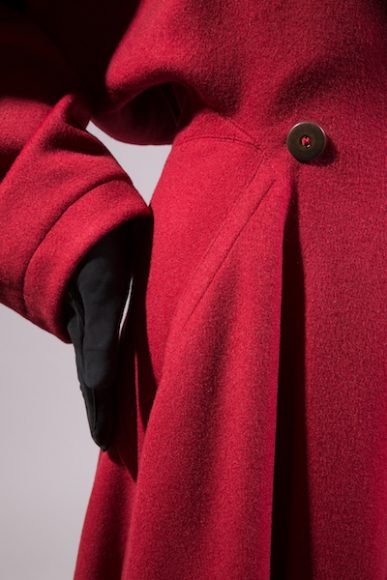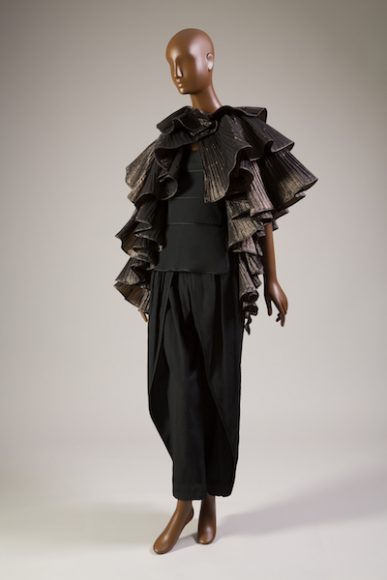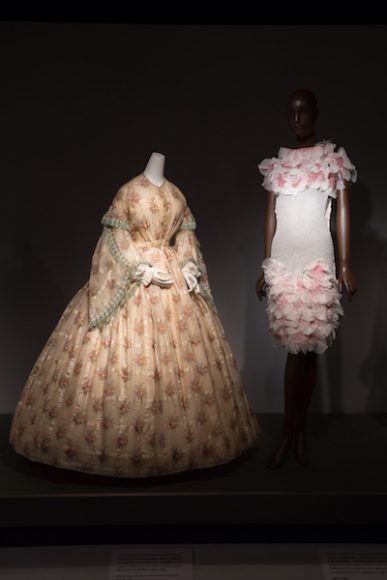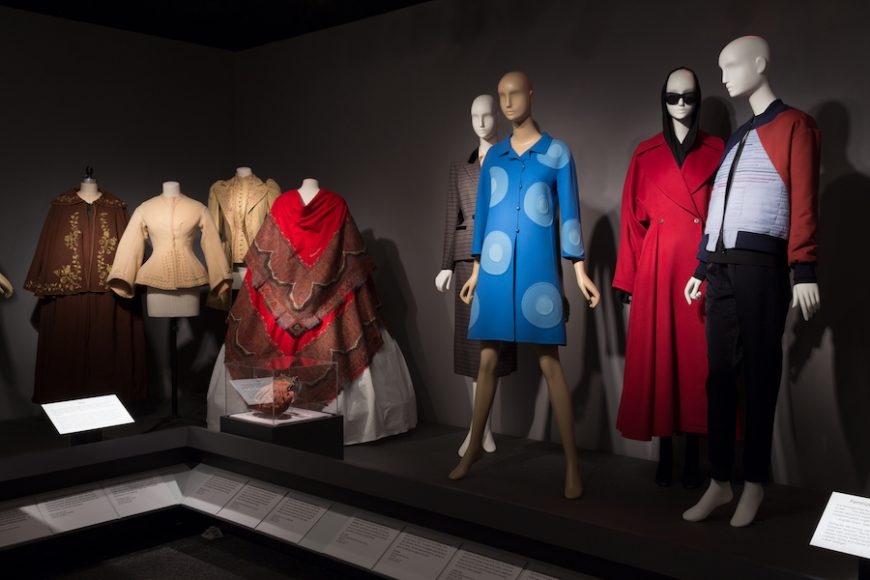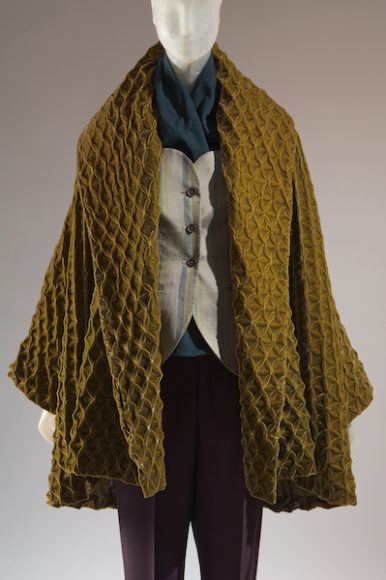Fabrics and textures tend to be on my mind this time of year. Thoughts might be prompted by the tying on of a wool scarf, slipping into leather gloves – or even buying something velvet for a holiday gathering.
It was a case of perfect timing, then, that I made a recent visit to The Museum at FIT to catch “Fabric in Fashion.”
As the exhibition brochure states, here it’s all about fabric – “the very stuff of fashion.”
The opening essay by curator Elizabeth Way also notes, it also “explores the cultural history of textiles in Euro-American women’s fashion over the last two and a half centuries in order to re-center the fashion narrative on materiality. The exhibition focuses on four of the most common fibers in Western women’s fashion: silk, cotton, wool and synthetics.”
The sweeping exhibition continues through May 4 in the museum of the Fashion Institute of Technology in Manhattan, and as I wandered the L-shaped gallery, it was indeed a tour through time, materials and fashion history as a whole.
Through an incredible array of examples, the exhibition takes the viewer through a host of silhouettes and trends, with text panels rounding out the narrative. You hear about Europeans and their desire for silk, about the French textile industry, Britain’s Industrial Revolution and scientific developments reflected in man-made fibers. It’s an exhibition of many layers, one worth exploring at length – or over several visits.
Everyone will find their own highlights, be inspired or learn from specific examples on display. I was captivated by many designs, notably an Issey Miyake synthetic metallic ruffled cape ensemble from 1982; a Lucien Lelong wool jersey suit and coordinating sweater, circa 1927; a Romeo Gigli ensemble with a coat of faux smocked velvet designed by Nigel Atkinson, fall of 1991; a Liberty of London blue silk damask Chinese-style evening coat (1908-1910); and a stunningly sleek Mariano Fortuny black silk velvet dress with gold metallic, circa 1930-39.
It all serves to encourage a fresh perspective, cultivating an appreciation of the value of materials and well-made garments, something important to keep in mind during this time of fast-fashion and disposable clothing.
For more, visit exhibitions.fitnyc.edu/fabric-in-fashion or fitnyc.edu/museum.
– Mary Shustack

